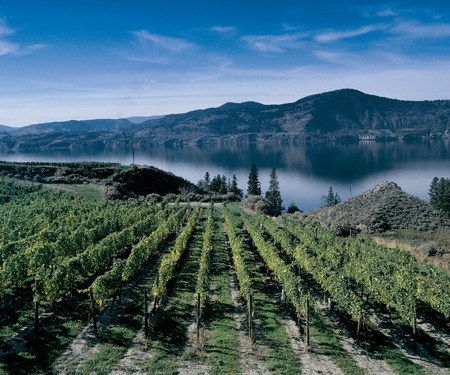I spent much of last week judging the BC Wine Awards in Kelowna as part of the Okanagan Fall Wine Festival. Cloistered inside a hotel for four days, I gave both my palate and my toothbrush a good workout. I always get asked how these things work, so this weeks column is going to give you a brief, general overview of both the process and the results.
Any B.C.-based winery can enter the BC Wine Awards in hopes of garnering bronze, silver or gold medals. The results spark an immediate industry-wide spike in elation (the winners), despair (non-winners), press releases (publicists) and sales (liquor stores, restaurants).
Over the course of four days, almost 500 wines were evaluated by nine judges, which included wine journalists, educators and industry professionals from across North America. We judged many flights, each containing around 12 wines. All were tasted completely blind the only thing we knew was what grape varieties the wines contained.We werent given price point, region or producer. After each panel tasted and noted a flight, wed all discuss our personal scoring and aim to reach a consensus. Candidates for gold medals were set aside for all nine judges to re-assess on the final day, when the decision is made between gold and silver medal winners. There was no quota of medals to be awarded. This was simply and appropriately a case of finding the best wines.
Results throughout had most judges sharing similar philosophies and opinions. First off, do we ever have to lay off the oak for Merlot in B.C.! The pretty cherry and sage-y fruit was almost always masked by enormous mouth-puckering tannins, the kind that wear Ed Hardy T-shirts and flex while snorting rails. Its ridiculous. Second, Cabernet Sauvignon still has a tough time getting ripe enough around these parts, resulting in a green and stemmy character. Syrahs full of purple fruit, dark chocolate and spice showed very well, as did some nice, plush Malbecs juicy and full of currants, espresso and violets. A shame that some Syrah vines are being torn out in the valley to make way for Merlot. Id like to see the reverse.
On the white side of things, the Alsatian varieties Riesling, Pinot Blanc, Pinot Gris and Gewürztraminer still rule. Each fared quite well, from lighter, aromatic styles to richer versions full of orchard fruit. Many of the other whites Chenin Blanc, Semillon and Viognier did well when in the right hands. The only ones that didnt seem to jibe with us were Sauvignon Blancs, most of them being clumsily structured, and Chardonnays which were generally unremarkable but inoffensive.
Hearty congrats, however, go out to the vineyards and viticulturalists behind Best Red Wine gold medal winner Red Rooster 2009 Reserve Syrah ($30), full of mocha, blackberries and dusty sage and Best White Wine gold medal winner Summerhill Pyramid Winery 2010 Organic Riesling ($20), with its juicy apples, pears and generous minerality.
For complete results of the BC Wine Awards and further commentary, visit my website,



